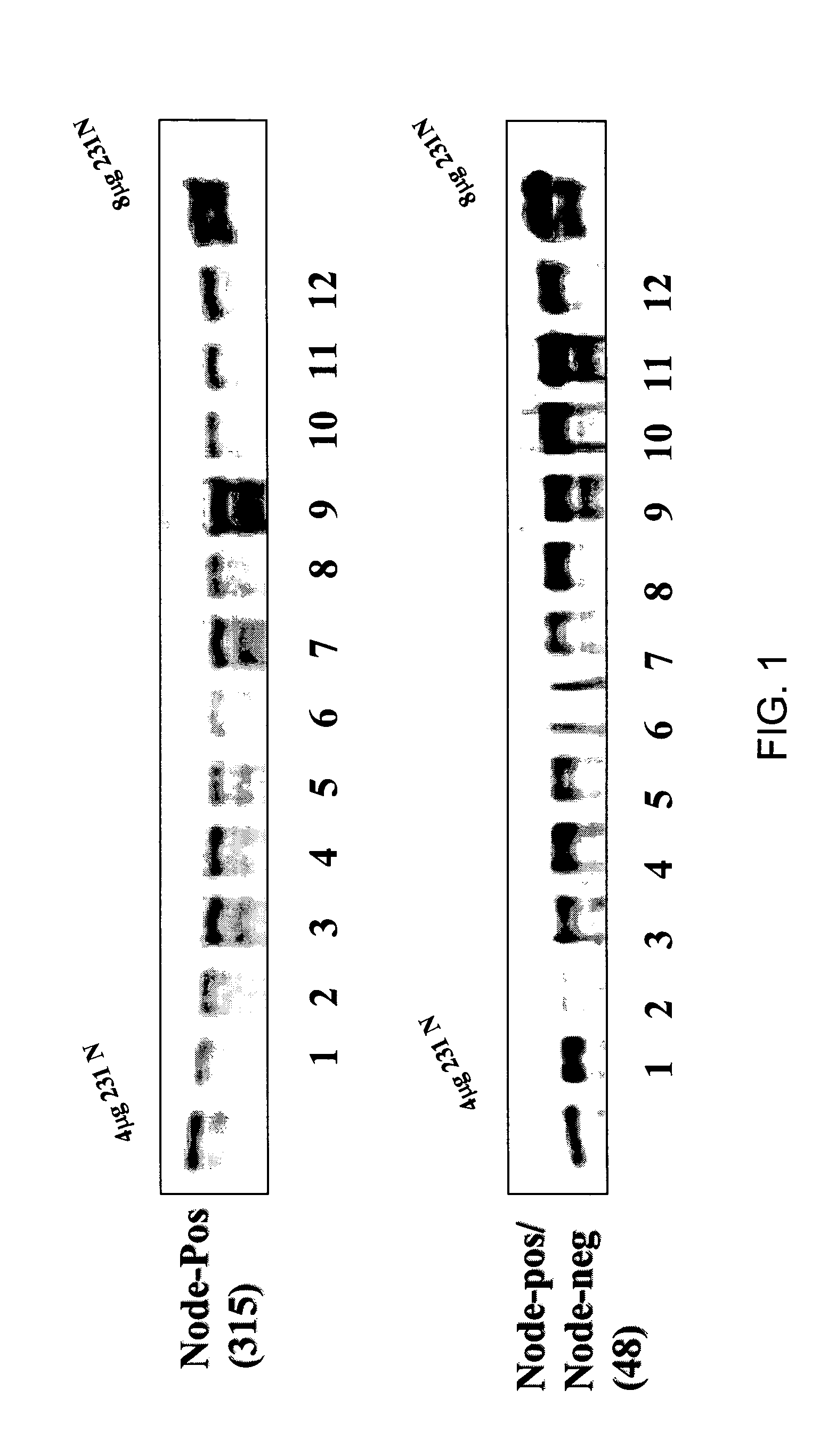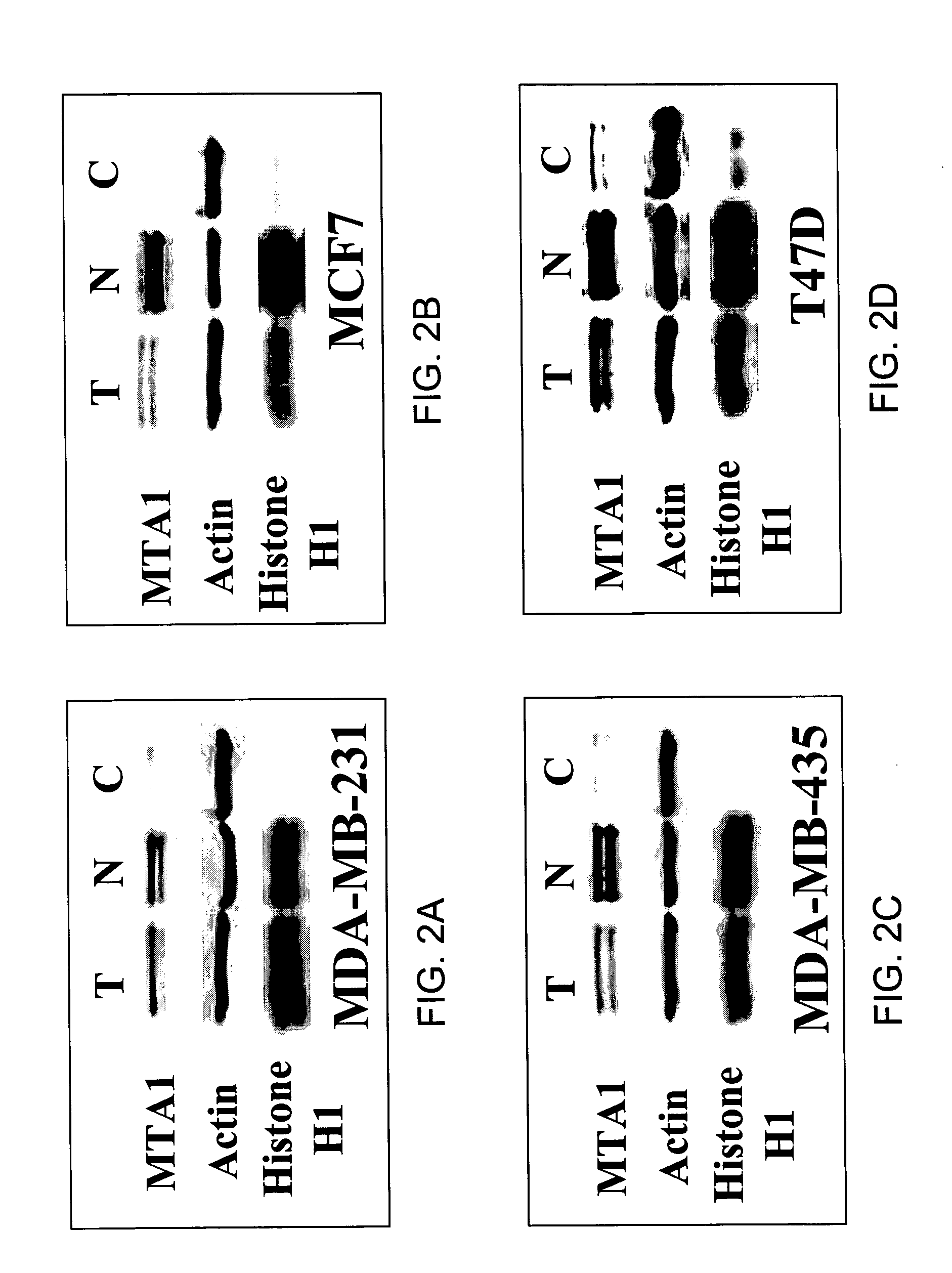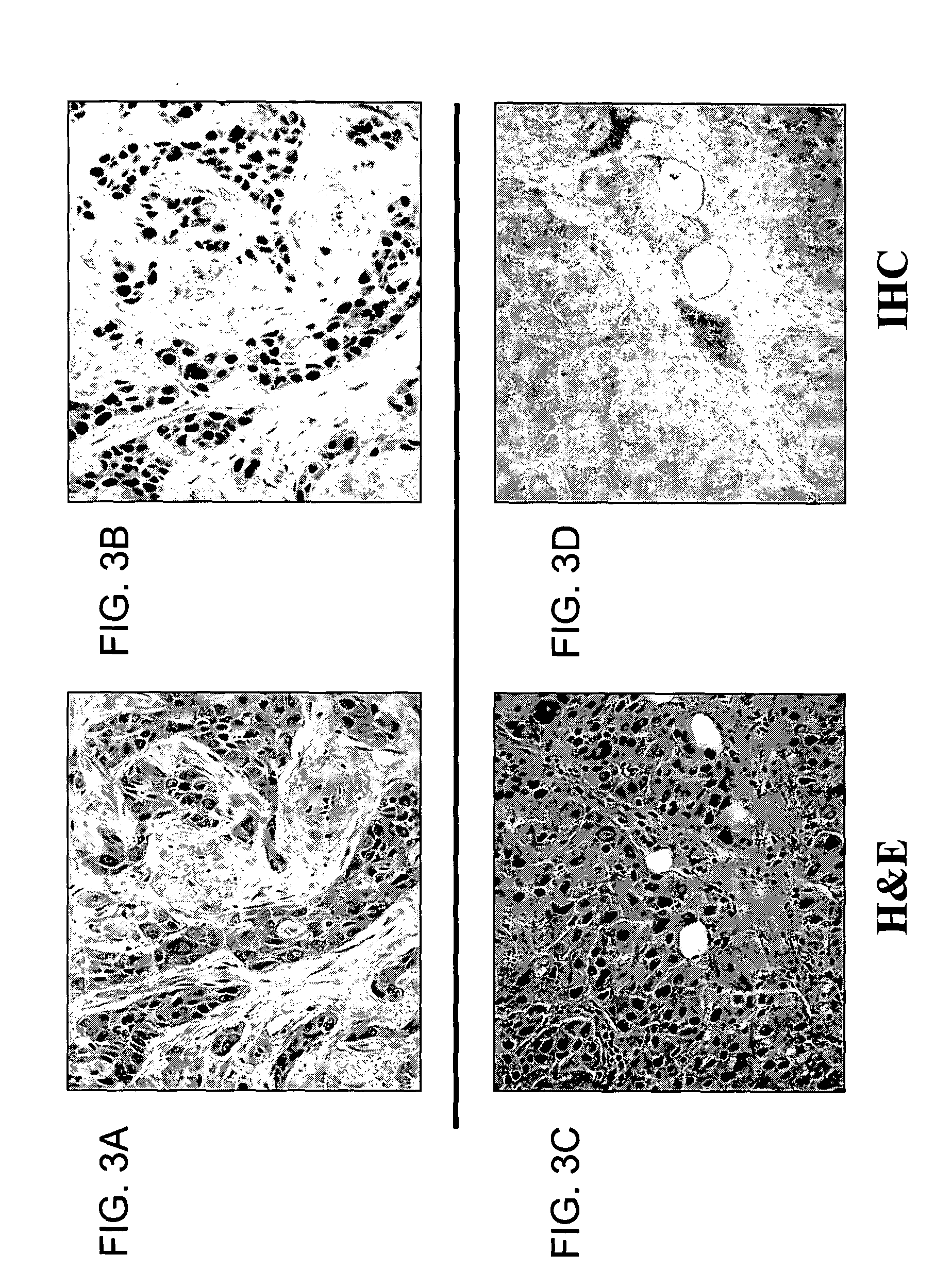MTA1 is a predictive and prognostic factor in human breast cancer
a prognostic factor and human breast cancer technology, applied in the field of genetics, molecular biology, cell biology, immunology and medicine, can solve the problems of unclear indications, unclear best identification of patients whose risk of disease recurrence exceeds their risk of significant therapeutic toxicity, etc., to improve disease-free survival and improve disease-free survival
- Summary
- Abstract
- Description
- Claims
- Application Information
AI Technical Summary
Problems solved by technology
Method used
Image
Examples
example 1
Method of Constructing an Anti-MTA1 antibody
[0253] Peptide antigen selection software was used to identify optimum MTA1-specific peptide sequences in regions of non-homology as compared to the closely related MTA-L1 peptide, which has 68% sequence homology (FIG. 8). A list of peptides was developed as candidates, based in part on antigenicity, for the production of a specific anti-MTA1 antibody, which does not cross-react with MTA homologs. Two of the candidate peptides were chosen for further characterization: i) N-terminal amino acids 88-104, ENPEMVDLPEKLKHQLR (SEQ ID NO:6); and ii) C-terminal amino acids 651-670, IDAPGDVFYMPKEETRKIRK (SEQ ID NO:7).
[0254] The peptide of SEQ ID NO:6 was conjugated using MAP (multiple antigen peptide) techniques. This is done by synthesizing eight copies of the peptide onto a MAP carrier core. The peptide is attached to the core at the C-terminus. The peptide of SEQ ID NO:7 was conjugated at the N-terminus using the traditional KLH method. The der...
example 2
Method of Constructing a Tissue Array
[0257] A tissue array for immunohistochemical analysis of MTA1 was constructed by using pre-weighed samples of powdered breast tumor tissue that were removed from frozen storage (−70 Celsius), hydrated with chilled 1× phosphate buffered saline solution, and quickly pelleted by centrifugation. The tissue pellet was fixed in buffered formalin, and embedded into paraffin blocks.
[0258] To assemble the arrays, cores were obtained from the tissue blocks with a 5 mm dermal biopsy punch. The cores were re-embedded in an alphanumeric grid pattern (12 samples per block) into a pre-cored blank paraffin block. An orientation marker denoting the A1 sample was included on each block, and consisted of either a section of normal endocervix or myometrium tissues. A microtome was used to cut 3 micron sections from the tissue array paraffin blocks, which were transferred to glass microscope slides. The resulting slides were then deparrafinized and subjected to st...
example 3
Method of Constructing His-Tagged MTA1
[0259] A vector encoding for MTA1 polypeptide having a histidine tag, named MTA1-T7, was constructed as described by Mazumdar et al., 2001. The vector used for the construction was the pcDNA 3.1 / His A construct available from Invitrogen. The vector was modified with a T7 tag, which was inserted directly before the translation start site. The full length human MTA1 construct (SEQ ID NO:2) was then subcloned into the multiple cloning site. Detection studies were done in this case using an antibody to the T7 tag (Novagen).
PUM
| Property | Measurement | Unit |
|---|---|---|
| size | aaaaa | aaaaa |
| size | aaaaa | aaaaa |
| temperatures | aaaaa | aaaaa |
Abstract
Description
Claims
Application Information
 Login to View More
Login to View More - R&D
- Intellectual Property
- Life Sciences
- Materials
- Tech Scout
- Unparalleled Data Quality
- Higher Quality Content
- 60% Fewer Hallucinations
Browse by: Latest US Patents, China's latest patents, Technical Efficacy Thesaurus, Application Domain, Technology Topic, Popular Technical Reports.
© 2025 PatSnap. All rights reserved.Legal|Privacy policy|Modern Slavery Act Transparency Statement|Sitemap|About US| Contact US: help@patsnap.com



